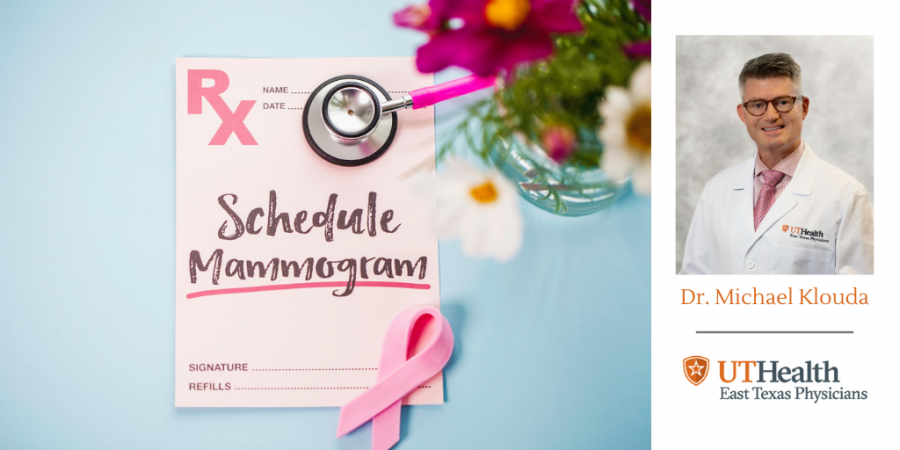
The mammogram is a powerful and potentially life-saving tool. In this blog, Dr. Michael Klouda, board-certified diagnostic radiologist at the UT Health East Texas HOPE Breast Care Center, explains when women should start receiving mammograms and why timing is so important.
Annual screening mammography should begin at age 40. This simple recommendation has recently been challenged by the medical community, stating, “Let us wait until age 50 to begin screening. Look at all the money we will save!” While there will be financial savings, young lives will be lost.
Years of life saved and lost are the highest among women in their 40s. Forty percent of all the years of life saved by mammography are among women in their 40s.
The incidence of breast cancer increases substantially around age 40. One in six breast cancers occurs in women aged 40-49. The incidence rate for ages 40-44 is twice that for ages 35-39 (122.5 vs 59.5 per 100,000 women). For ages 45-49 it is 188.6 per 100,000 women and it continues to increase until age 80.
We calculated our data here at the UT Health East Texas HOPE Breast Care Center and found that 19.5% of all cancers diagnosed were in women between 40-49 years of age.
Another published study showed that more than 70% of the women who died from breast cancer in their 40s at major Harvard teaching hospitals were among the 20% of women who were not being screened. Because medical science cannot determine which cancers will advance to kill a woman and which will not, all women 40 and older should be screened.
The largest (Helvie et al.) and the longest-running (Tabar et al.) breast cancer screening trials in history have reconfirmed that regular mammography screening decreases breast cancer deaths by roughly a third in all women ages 40 and older, including women in the 40-49 year decade. The U.S. Preventive Service Task Force (USPSTF) now shows that annual screening beginning at age 40 provides the most lives saved.
Women at elevated risk for breast cancer due to family history or other factors should speak to their doctor about initiating annual screening earlier than age 40. Mammography screening is an annual activity. Even for women ages 50 and older, skipping a mammogram every other year would miss up to 30% of cancers.
One question we get asked is if the increased radiation from getting mammograms annually versus bi-annually or every few years increases the risk of cancer. The amount of radiation used for mammography is exceedingly small. The risk of radiation-induced breast cancer from a mammogram is about the same as the risk of cancer from two months of natural background radiation exposure from the soil or atmosphere. The potential benefit of finding cancer early is much greater than the small potential risk of causing cancer.
Several years ago, a TV celebrity doctor was scaring women over a risk of thyroid cancer from radiation exposure during an annual mammogram. The amount of radiation that reaches the thyroid is minuscule. There is no evidence that radiation from a mammogram is causing thyroid cancer. Thyroid cancer has increased in incidence in men and women. Since very few men get a mammogram, mammography is not the cause of increased thyroid cancer. If it was, we would see a disproportionate increase in women over men, and this is not the case.
For every 1,000 women who undergo screening mammography, fewer than 100 are called to receive further screening though mammography or sonography images, 20 or fewer are recommended for biopsy and five are ultimately diagnosed with breast cancer. The earlier we catch it, the earlier we can start treatment and a better chance of survival.
To learn more to schedule your mammogram, visit uthealtheasttexas.com/services/breast-care or call 866-333-3862 and press 3.

